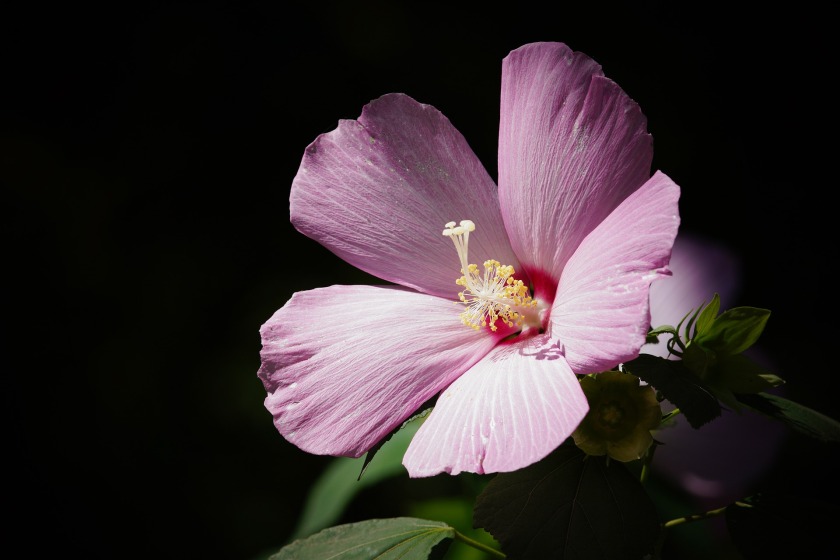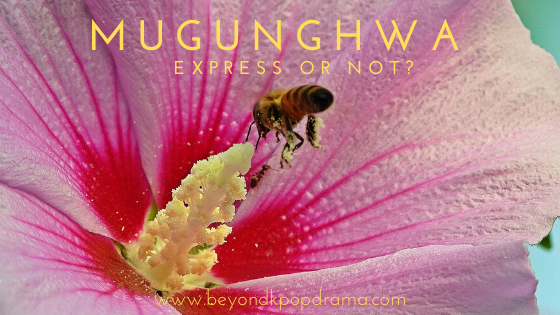No, it’s not red light green light that you probably saw in one of those Korean variety shows that you binge on. It’s not even the name of the train you ride on your way to Busan. It’s a rose, but not a rose. It’s the national flower of Korea, the Rose of Sharon, also known as ‘Mugunghwa’ in Korean or by its nicknames ‘everlasting flower’ or ‘the immortal flower.’ This Korean floral emblem is not just stunning but also has a lot of meaning for the Korean people.
What’s in the nomenclature?
This flower’s binomial nomenclature is Hibiscus Syriacus, and its Korean name is a combination of two words: ‘mu-gung’ meaning ‘everlasting’ and ‘Hwa’ meaning flower. True to its name, this beautiful flower is long-lasting, blooming from summer into autumn blossoming as the sun rises and closing its flowers every evening. This flower is strong, sturdy, and resistant to cold. The individual flowers don’t fall out together but instead one after another leading to a prolonged and bountiful blossoming period. If you want to visit South Korea to see these flowers, the period of July-October will be a fantastic time to witness the bloom of the Rose of Sharon.
It has five petals, and what makes it so beautiful is that it comes in a diverse range of colors such as pale pink, purple, and white, among others. The most common variation of this flower emblem is a single bloom with a pretty reddish hue in the center.
Koreans adore this flower as it pays tribute to their noble spirit and exemplifies the country’s countless victories and tribulations that they have endured in their unique history. Varieties of Rose of Sharon are categorized according to the colors of their blossoms. They are grouped as asadal, baedal, and dansim.
- Asadal: It’s a white flower with deep red in the middle that transitions to pale pink at the edges.
- Baedal: It’s an entirely white flower.
- Dansim: This flower comes in blue, purple, red, or white with intense purple or red center.
It is also a part of South Korean history. Even before the Gojoseon era, the Rose of Sharon was prized as a ‘blossom from heaven.’ Emphasizing its significance, even the Silla Kingdom referred to itself as ‘Geunhwahyang,’ which translates to “Country of Mugunghwa.”
 Image by Jaesung An from Pixabay
Image by Jaesung An from Pixabay
With time, the Korean people’s adoration of this flower was only boosted when in the late 19th century, the Korean national anthem included a phrase praising the beauty of the Rose of Sharon. Even during the darkest hour of the Japanese colonial rule, the Koreans devotion to the Rose of Sharon never waned. After its independence from Japan, it was only natural for the Korean government to recognize the Rose of Sharon as their flower emblem.
The Modern Rose
Even to this day, the Rose of Sharon hold’s a special place in the hearts of the Koreans. For instance, the most luxurious hotels are not labeled as ‘five-star’ but as ‘five Rose of Sharon.’ Its main feature is its endurance. If you go to Korea, don’t be surprised to see it in parks and alongside sidewalks. They grow quickly, are low-maintenance, and can endure for long. This is the main reason why the Korean government adopted it as the flower emblem as it represents the Koreans yearning for a lasting system of prosperity and national development. The Rose of Sharon is a symbol on the flags of the Korean government and national organizations and even on badges and decorations.
So next time you pass by those beautiful parks in Seoul, on a hot summer night, look for this tenacious bloom and perhaps get inspired on your devotion and determination to live life to the fullest, just like any flower that adds beauty to the world.
Hang on tight.



